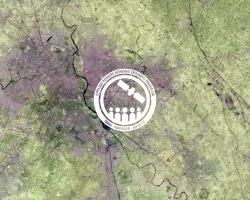Description
Climate change is not only changing the location, frequency, and severity of environmental extremes and hazards, but also the baseline spatial and temporal patterns that have served as the basis for land use planning, the design of infrastructure, and the development of construction standards and practices. To anticipate the emerging impacts on communities, we must improve understanding of exposed assets, including the built infrastructure and its characteristics such as structure type, use, occupance, compliance with engineering standards, and replacement cost. GIS databases track exposure on a wide variety of scales, formats, and levels of detail, yet aggregating these data for risk assessment typically results in skewed datasets that present a view of risk that is limited to known assets. In this short course, we will cover the basics of natural hazard risk modeling and exposure development with a focus on fusing data from multiple datasets expressly for the purposes of risk assessment. We will also present examples applying the techniques to applications related to flood risk assessment, climate adaptation, and earthquake modeling.
This training is also available in Spanish.

A portion of this training was funded by the NASA Applied Sciences Disasters Program.
By the end of this training attendees will be able to:
- Recognize what building vulnerability is and why it is important for risk modeling
- Identify the core elements of natural hazard risk modeling and asset loss estimation
- Identify fundamental approaches for developing building-exposure models using Earth Observation data and tools
- Apply a basic procedure to model built infrastructure exposure and vulnerability characteristics from Earth Observation data
- Evaluate building-specific exposure data sets to identify key components for fit, validity, consistency and rectify bias
- Evaluate the appropriate use of modeled building exposure data to a given community
- Apply strategies to identify and address equity and bias considerations
- Apply approaches to validate building data with imagery for regional datasets
- Document your exposure development process through metadata so that others can understand the process used, the limitations, and how to update if necessary.
Advanced-level students interested in risk assessment and climate change adaptation, emergency managers, risk modelers, GIS analysts, EO researchers and analysts, Structural Engineers, climate adaptation researchers and planners
Three, 2 hour sessions
- What is exposure data, and how is it used in the loss estimation process?
- The basic process of developing exposure data
- Structural mapping scheme development and building sampling
- Case Study: walkthrough of building exposure data for Tunisia
Materials:
- Developing a building-level exposure data set for HAZUS Flood Study in New York
- Using Earth Observations to develop a building structures dataset
- Case study: Sampling from streetview to characterize vulnerability
Materials:
- Exposure data best practices
- Developing and understanding metadata
- Equity and bias considerations
- Case study: Assessing climate change impacts with building exposure data in Antigua and Barbuda
Materials:
- Proficiency in GIS and basic understanding of disaster risk management
- Fundamentals of Remote Sensing



